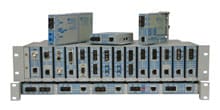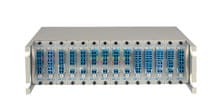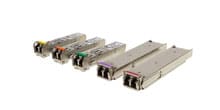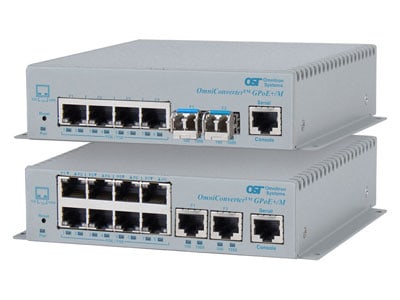- Products
- PoE Media Converters and Switches
- Ethernet & PoE Switches Product Selector
- Multi-Gigabit Ethernet and PoE Switches
- PoE PSE Commercial Switches
- PoE PSE Industrial Fiber Switches
- PoE Industrial Copper Extenders
- PoE Powered Media Converters
- PoE PSE Media Converters
- PoE Extenders & Injectors Product Selector
- Pluggable Transceivers Product Selector
- Single Pair PoE Products
- Product Lines
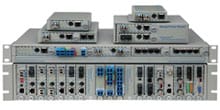
- iConverter Managed Multi-service Platform
- Copper to Fiber Media Converters
- Ethernet Media Converters
- 10 Gigabit Copper-to-Fiber
- 10/100/1000 Copper to 10 Gigabit Fiber
- 10/100/1000 Copper-to-Fiber with Integrated Management
- 10/100/1000 Industrial Copper-to-Fiber with Integrated Management
- 10/100/1000 Copper-to-Fiber with VLAN
- 10/100/1000 Dual Media Converter with VLAN
- Gigabit Copper-to-Fiber
- 10/100 Copper-to-Fiber with Integrated Management
- 10/100 Industrial Copper-to-Fiber with Integrated Management
- 10/100 Copper-to-Fiber with VLAN
- 10/100 Copper-to-Fiber
- Fast Ethernet Copper-to-Fiber
- Fast Ethernet Redundant Links
- 10Mbps Copper-to-Fiber
- 10Mbps Copper to Coax
- TDM Media Converters
- Serial Media Converters
- Ethernet Media Converters
- Fiber to Fiber Media Converters
- 10 Gigabit Fiber-to-Fiber Converter and Transponder
- 10 Gigabit Industrial Converter and Transponder
- SFP-to-SFP Fiber Converter and Transponder
- SFP-to-SFP Industrial Fiber Converter and Transponder
- Gigabit Fiber to-Fiber with 3 Rs
- 100/1000 Fiber-to-Fiber with 3 Rs
- Gigabit Fiber-to-Fiber
- Fast Ethernet Fiber-to-Fiber with 3 Rs
- Fast Ethernet Fiber-to-Fiber
- OC-3/STM-1 Fiber-to-Fiber
- OC-12/STM-4 Fiber-to-Fiber
- Carrier Ethernet Network Interface Devices
- CE 2.0 - 10G Demarcation NID
- CE 2.0 - 10/100/1000 Mult-port NID
- CE 2.0 - 10/100/1000 Mult-port NID with PoE
- CE 2.0 - 10/100/1000 8-Port NID
- CE 1.0 Service OAM - 10/100/1000 NID
- CE 1.0 Link OAM - 10/100/1000 Copper-to-Fiber NID
- CE 1.0 Link OAM - 10/100 Copper-to-Fiber NID
- CE 1.0 Link OAM - Gigabit Fiber-to-Fiber NID
- CE 1.0 Link OAM - Fast Ethernet Fiber-to-Fiber NID
- CWDM Multiplexers
- T1/E1 Multiplexers
- Ethernet Switch Modules
- Management System
- Chassis Options

- 1-Module Industrial Chassis
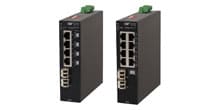
- RuggedNet Industrial Switches and Extenders
- Industrial PoE PSE Fiber Switches
- Multi-Gigabit Managed Industrial PoE+/BT Switches
- Multi-Gigabit Unmanaged Industrial PoE+/BT Switches
- 10G Managed 802.3bt PoE Switches
- 10G Unmanaged 802.3bt PoE Switches
- 10G Managed PoE+ Switches
- 10G Unmanaged PoE+ Switches
- 1G Managed PoE+ Switches
- 1G Unmanaged PoE+ Switches
- 1G Unmanaged 802.3bt PoE Switches
- 1G Managed 802.3bt PoE Switches
- Industrial SPE Switches
- Industrial Ethernet Switches
- Industrial PoE Copper Extenders
- Industrial Power Supplies

- OmniConverter Media Converter, Switches and Extenders
- PoE PSE Media Converters
- 10G Multi-Gigabit / Multi-Rate PoE Media Converter
- 10G Multi-Gigabit / Multi-Rate Media Converter
- 10/100 Multi-port PoE+ Media Converter
- 10/100 PoE+ Media Converter
- 10/100/1000 Multi-Port PoE+ Media Converter
- Industrial 10/100/1000 Multi-Port PoE+ Media Converter
- 10/100/1000 PoE+ Media Converter
- 10/100/1000 PoE++ 60W-100W Media Converter
- Industrial 10/100 Multi-port PoE+ Media Converter
- 1U Rack-Mount Shelf
- PoE PSE Compact Switches
- Multi-Gigabit Managed PoE+/BT Switches
- Multi-Gigabit Unmanaged PoE+/BT Switches
- 10G Managed 802.3bt PoE Switches
- 10G Unmanaged 802.3bt PoE Switches
- 10G Managed PoE+ Switches
- 10G Unmanaged PoE+ Switches
- 1G Managed PoE+ Switches
- 1G Unmanaged PoE+ Switches
- 1G Managed 802.3bt PoE Switches
- 1G Unmanaged 802.3bt PoE Switches
- Ethernet Switches
- Single Pair Ethernet (SPE)
- PoE Copper Extenders
- PoE Injectors
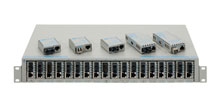
- miConverter Unmanaged Miniature Media Converters
- 10/100/1000 Copper-to-Fiber
- Industrial 10/100/1000 Copper-to-Fiber
- 10/100/1000 Ultra-Compact Copper-to-Fiber
- Gigabit Copper-to-Fiber
- 10/100/1000 Copper-to-Fiber PoE Powered
- 10/100 Copper-to-Fiber
- 10/100 Ultra-Compact Copper-to-Fiber
- 10/100 Copper-to-Fiber PoE Powered
- 18-Module Chassis
- Industrial 10/100 Copper-to-Fiber PoE Powered
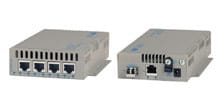
- FlexSwitch Compact Switches
- Solutions
- Company
- Support
- How to Buy
PoE-Powered Telemedicine: Reliable Remote Patient Care

Telemedicine has shifted from a convenience to a necessity. In 2024 alone, over 37% of U.S. adults reported using telehealth services (CDC). For hospitals and clinics, this rapid growth creates a challenge: how do you ensure that virtual healthcare and remote monitoring systems run reliably, 24/7, without the risk of downtime?
The answer lies in PoE-powered telemedicine. By delivering power and data over a single Ethernet cable, Power over Ethernet (PoE) provides the dependable foundation needed for secure, always-on telehealth infrastructure.
At Omnitron, our engineering team has decades of experience designing industrial-grade networking solutions for mission-critical environments. In this article, we’ll show why PoE in healthcare is becoming the backbone of modern telemedicine, and how hospitals can build networks that guarantee reliable remote patient care.
What is PoE-Powered Telemedicine?
PoE-powered telemedicine refers to telehealth services and infrastructure supported by Power over Ethernet (PoE) technology. Instead of running separate cables for power and data, PoE delivers both through a single Ethernet connection, reducing complexity and increasing reliability.
Typical PoE-enabled medical devices include:
- Telemedicine carts: for remote consultations and mobile diagnostics
- Remote patient monitoring systems: tracking vitals in real-time
- Telehealth stations: for virtual care in rural or underserved areas
- Mobile diagnostic tools: integrated with hospital IoT networks

By simplifying connectivity, PoE ensures that these connected medical devices remain online and operational at all times.
Why Reliable PoE is Essential for Remote Patient Care
In a hospital, downtime is never acceptable. A single lost connection during a virtual consultation or remote ICU monitoring session can delay treatment, risk patient safety, and even create liability issues.
Reliable PoE switch ensures:
- Continuous uptime: No dropped connections during critical telehealth sessions.
- Consistent power delivery: Medical devices stay online without relying on wall outlets or battery packs.
- Secure, centralized management: IT teams can monitor devices across the hospital’s telemedicine infrastructure.
According to the U.S. Department of Health and Human Services (HHS), reliable telehealth technology is now considered an essential component of healthcare access and equity. PoE is a critical enabler of that reliability.
Key Benefits of PoE-Powered Telemedicine
Hospitals and healthcare providers adopting PoE-powered telemedicine realize several advantages:
- Power + Data in One Cable: Simplifies infrastructure and minimizes failure points.
- Lower Infrastructure Costs: Eliminates the need for separate electrical wiring, reducing installation and maintenance expenses.
- Faster Deployment: Get telemedicine stations or monitoring systems online quickly, without waiting for electrical upgrades.
- Enhanced Scalability: Easily add new telehealth services as patient demand grows.
- Compliance and Safety: Industrial-grade PoE switches meet medical safety standards and support redundancy.
- Real-World Use Cases:
- Virtual patient consultations
- Remote ICU and emergency room monitoring
- Mobile diagnostic stations in community clinics
- Nurse call and alarm systems integrated into telehealth platforms
Common Challenges Without Reliable PoE
Healthcare organizations that lack a reliable PoE foundation often face:
- Telemedicine Downtime: Dropped sessions or device failures during virtual consultations.
- Security Vulnerabilities: Ad-hoc setups using consumer-grade equipment expose hospitals to data breaches.
- Higher IT Costs: Multiple power sources and complex cabling increase maintenance burdens.
- Delayed Patient Care: Unreliable connections can stall diagnosis, treatment, or emergency consultations.

Omnitron engineers have seen hospitals forced to replace makeshift solutions within a year because they couldn’t handle the scale and reliability required for professional telemedicine infrastructure.
-----------------------------------------------------------------------------
Omnitron Expert Tips for Deploying PoE-Powered Telemedicine
Based on decades of healthcare networking deployments, here are Omnitron’s recommendations:
- Design Redundancy Into Your Network: Always include backup PoE switches and failover systems.
- Use Managed PoE Switches: These allow IT teams to monitor device health, adjust power allocation, and troubleshoot remotely.
- Segment Telehealth Traffic: Keep telemedicine data separate from guest Wi-Fi or administrative traffic to improve performance and security.
- Plan for Scalability: Build capacity for future telehealth services, not just current needs.
- Work with Trusted Vendors: Ensure your PoE solutions are industrial-grade and healthcare-compliant.
Red Flag to Avoid: Contractors who propose consumer-grade switches or fail to provide redundancy and monitoring—these solutions won’t meet hospital reliability standards.
Browse Omnitron’s PoE Switches
FAQs about PoE and Telemedicine
What devices can PoE support in telemedicine?
Telemedicine carts, patient monitoring systems, diagnostic equipment, IP cameras, and telehealth kiosks can all be powered by PoE.
Is PoE safe for powering medical devices?
Yes. With industrial-grade solutions like Omnitron’s PoE switches, power delivery is safe, reliable, and compliant with healthcare standards.
How does PoE improve remote patient care reliability?
By combining power and data in one connection, PoE reduces failure points and ensures devices remain online for critical patient care.
Can PoE reduce telemedicine deployment costs?
Absolutely. PoE lowers installation costs by eliminating separate power wiring and enables faster deployment of telehealth services.
What is the lifespan of a PoE-powered telemedicine solution?
With quality equipment and proactive maintenance, PoE networks can reliably support telemedicine infrastructure for 10–15 years.
Conclusion: Building Reliable Telemedicine with PoE
The future of healthcare depends on reliable remote patient care, and PoE-powered telemedicine provides the foundation to make it possible. From virtual consultations to remote ICU monitoring, PoE ensures continuous uptime, scalability, and compliance.
At Omnitron, we specialize in building secure, scalable PoE networking solutions tailored to the unique needs of healthcare providers. Our goal is simple: keep your telemedicine infrastructure reliable so your patients can receive the care they need—anytime, anywhere.
Contact Omnitron systems today to learn how our PoE solutions can power your telemedicine infrastructure with reliability and confidence.

